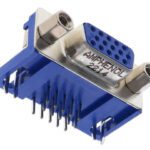Five Things to Know About Semiconductor Sales
As goes the semiconductor market, so go interconnects. The Semiconductor Industry Association shares the five things to know about global semiconductor sales now.
 1. Global semiconductor sales reached a record high in 2013.
1. Global semiconductor sales reached a record high in 2013.
Worldwide semiconductor sales for 2013 reached $305.6 billion, the industry’s highest-ever annual total and an increase of 4.8% from the 2012 total of $291.6 billion. The global semiconductor industry exceeded $300 billion in sales for the first time ever in 2013, spurred by consistent, steady growth across nearly all regions and product categories. Total sales for the year narrowly exceeded expectations from the World Semiconductor Trade Statistics (WSTS) organization’s industry forecast. Historically, the semiconductor market has experienced strong growth: For example, in 2003 semiconductor sales reached $166 billion. That means sales have nearly doubled in 10 years.
2. 2013 semiconductor sales by product type were strong across the board.
The industry saw strong demand in several product segments during 2013. Logic was the largest semiconductor category by sales, reaching $85.9 billion in 2013, a 5.2% increase compared to 2012. Memory at $67 billion and MOS micro-ICs at $58.7 billion rounded out the top three segments in terms of sales revenue. Memory was the fastest-growing segment, increasing 17.6% in 2013. Within memory, DRAM performed particularly well, increasing by 33.3% year over year, while NAND flash experienced strong growth of 8.1%. Other positively performing product segments include optoelectronic products, which reached $27.6 billion in sales (5.3% annual increase) and analog, which reached $40.1 billion in sales (2.1% annual increase).
3. Sales by end market are becoming increasingly diversified.
Twenty years ago, roughly half of all semiconductor sales were driven by the PC end market. While PCs still represent the largest end market for semiconductor sales, other end markets, such as communication, automotive, and industrial, have increased their share over the past five years.
4. Semiconductor sales are increasingly influenced by GDP growth.
As semiconductors become more embedded in everyday products, and as the electronic content of products increases, changes in semiconductor sales have become more sensitive to GDP growth. The health of the global macroeconomy plays a strong role in the direction of chip sales. As the United States and the world slowly recover from the global economic recession, this recovery bodes well for increased sales in semiconductors. The WSTS forecasts that global semiconductor sales in 2014 and 2015 will further grow by 4.1% and 3.4%, respectively.
5. While Asia Pacific remains the largest semiconductor market, the Americas grew rapidly.
Regionally, the Americas market continued to show signs of strength, increasing annual sales by 13.1% in 2013. Annual sales also increased in Asia Pacific (7.0%) and Europe (5.2%), but fell sharply in Japan (-15.2%), in part due to the devaluation of the Japanese yen. Sales trend lines for Europe and Japan are pointed in the right direction, perhaps indicating that 2014 could be a stronger year for both regions. Although semiconductor sales in Q3 are often stronger than Q4, sales in the Americas grew by 4.5% in Q4, defying seasonal trends. The US semiconductor market grew nearly three times faster than the global semiconductor market, despite lingering macroeconomic headwinds.
[hr]
Falan Yinug is director of industry statistics and economic policy at the Semiconductor Industry Association (SIA) in Washington, D.C. For more information on global semiconductor sales, click here.







